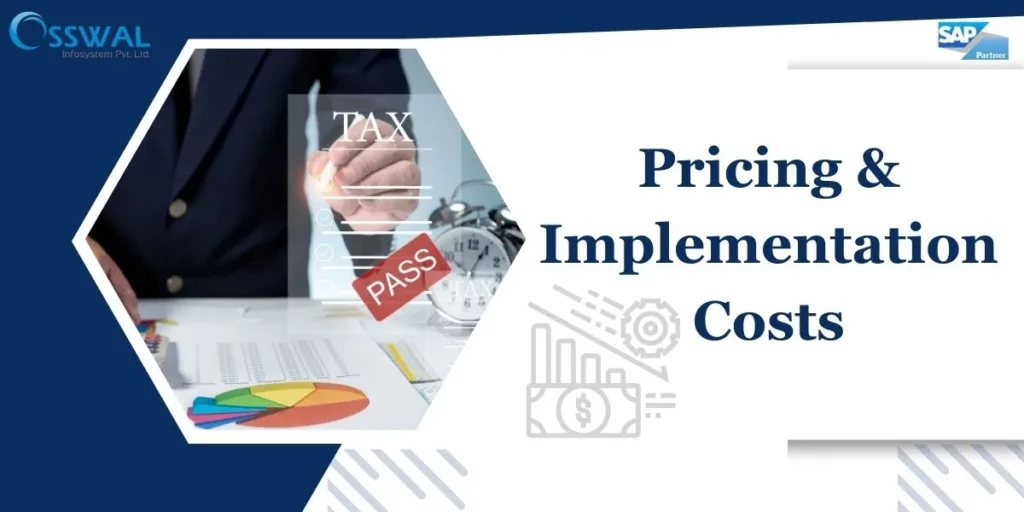An intelligent, next-generation ERP system, SAP S/4HANA Public Cloud, combines state-of-the-art technology, industry best practices, and cloud capabilities.
Businesses can scale their operations in the public cloud to their shifting needs. The cloud-based infrastructure allows for easy resource adjustment, allowing firms to react to growth, seasonality, or market variations.
The HANA in-memory database, according to experts, has many advantages for businesses and analytics with SAP S/4HANA. The system may also be simpler to use than ECC, making transitioning to the cloud easier.
The most significant business advantages of SAP S/4HANA are listed below.
1. Simpler to Update Business Models
SAP S/4HANA gives businesses better opportunities to utilize data and pivot to new business models, making modification smoother for companies. Built entirely from scratch, SAP S/4HANA carefully considers how businesses operate today. This platform makes it simpler and quicker to enter new markets if you wish to make adjustments, acquire companies, or create new sales channels.
2. Lower Ownership Costs
S/4HANA unifies global available-to-promise (Global ATP) services and master data governance within the core. From an infrastructure standpoint, fewer devices mean less ownership and maintenance expenses.
Numerous tasks and functions stand to benefit from SAP’s cloud ERP platform.
Businesses can leverage public or private cloud deployments combined with SAP’s virtualization to consolidate their infrastructure, thanks to the shared infrastructure made possible by S/4HANA. By switching from the outdated physical infrastructure to a more cloud-native environment provided by S/4HANA, businesses can achieve an 11% to 17% decrease in IT costs.
3. Faster Analytical Insights
HANA, the in-memory database included with S/4HANA, offers significantly faster speed. Its intelligent data architecture lowers aggregate tables and data redundancy to boost efficiency. The basic ERP system offers analytics and quicker insights rather than storing data in a data warehouse and waiting for it to load.
It also speeds up insights when business transactions and analytics capabilities are included in the same system. This eliminates the need to switch between systems and apps and enables businesses to swiftly and efficiently make choices and finish business operations in a single application using a single source of information. It is effective and saves a ton of time.
4. More Accurate Forecasting
S/4HANA’s embedded AI and machine learning applications are gradually developing to enhance modeling, predictive results, and forecasting. Retailers can create a model that predicts the demand for a specific product over a specified period.
5. Assets Maintained Proactively
Companies can combine industrial IoT sensors with S/4HANA for predictive analytics, especially on the manufacturing shop floor, to monitor assets and receive warnings if a machine is underperforming. The in-memory database, AI, and machine learning enable this. The sensors continuously track movement, temperature, and vibration. Based on baseline measurements, businesses can forecast when a machine requires maintenance or may malfunction.
6. Simpler User Interface
For more than 20 years, SAP didn’t give up on its GUI, the recognizable user interface. To better represent improved business processes, SAP rebuilt it for S/4HANA. Additionally, businesses may perform routine business processes on iOS and Android devices using the SAP Fiori user interface platform integrated into S/4HANA.
IT IS IMPERATIVE TO DO SAP S/4HANA MIGRATION, RIGHT
The process of migrating is intricate and complicated. Effective strategic planning is essential for the SAP HANA migration to be successful. Organizations should make an effort to reduce costs and interruptions. However, if it is finished successfully, organizations will require a solid base to concentrate on their core skills and keep SAP functioning and rolling. If they go for on-premise, they must be sure to get hardware from certified vendors experienced in building up infrastructure for SAP HANA, and if they opt for on-cloud, they must pick the appropriate cloud partner.
Managed private cloud hosting for SAP HANA has been made available by Osswal Infosystem to customers in multiple industries. We are experts in how various infrastructure stack components interact with one another. Our consultation helps optimize the requirements and offers the best-fit solutions for the client’s business requirements. We have extensive knowledge of the HANA platform, its operational architecture, hosting environment, and migration process.
Now, when your business requires a business suite like S/4HANA Cloud to enhance the digital future, trust us to integrate and implement the ERP. The company is focused on business automation and digital transformation technologies. Partner with Osswal for end-to-end SAP implementation and support services.




